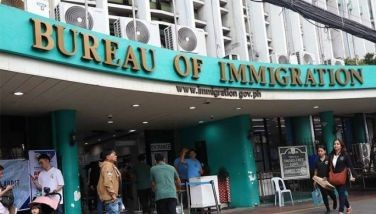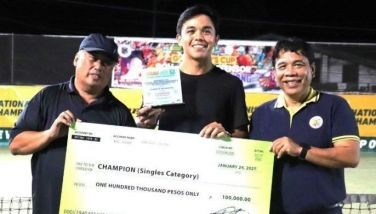From sayote to coffee
How do we transform or change the mindset of sayote (chayote) farmers to convert to crops that are safer for the environment and will give sustainable incomes? If you have the chance to visit the Cordillera range, look around for sayote farms, especially in Benguet province. On the steep slopes and zigzag roads, farmers turn to sayote as a cash crop. But to do this, they clear the forest and of course cause damage to the soil and forest cover.
It is not easy to keep yourself bent over to check the vegetables under the thick leafy cover, but it provides a constant income stream for the upland farmer. But a woman farmer said it is easy to grow, does not require spraying and provides well for their everyday needs. A bag of sayote can be sold farmgate for P20-22.50/ kilo, and this ends up being P80/kilo at your local supermarket.
A progressive non-government organization (NGO) working with us in the coffee areas have a formula for “dignified partnership” between their NGO and the very producers of sayote and coffee. The community workers endeavor to change the mindset of the farmers, slowly but surely, whilst getting their trust to change over from sayote to growing coffee. The formula entails speaking the local language, knowing the community leaders, helping plan their future which includes their own wishes and dreams. They are shown examples of how coffee can be a more sustainable crop, not destroying but adding to forest cover and bearing fruits every year for the next 50 or so years, well into their grandchildren’s time.
“Marangal” or dignified partnership is the order of the day for Kadwa Foundation – they do not believe in dole-outs, but a partnership where each side gives a contribution (whether cash or labor) and the beneficiary is the environment and the community. And in doing this, the NGO is able to transform the community on three levels: household, community and effect on the local ecosystem.
The foundation used to be solely a philanthropic one, until a botanist thought of making it a meaningful corporate social responsibility (CSR) program using his knowledge of the plant kingdom, his experience in organizing communities and his deep knowledge of what is beneficial to the environment. Coming from a scientific approach but “localizing” and making it understandable to lay people is Ernie’s gift. He shares examples and trivia like a college professor taking the class outside of the classroom. I gathered much scientific trivia while talking to Ernie as he drives and navigates the road from Baguio to Kibungan. Through over 80 kilometers of winding roads, we talked about his foundation’s vision, plants, mossy forests, etc.
Upon arrival in Kibungan, Ernie’s stories came to life. We met the community members who were preparing for our “meet and greet” lunch with our digital finance partners. They prepared Pinikpikan chicken (an Ilokano version of tinola), grilled pork and sayote shoots (talbos ng sayote). We were first served breakfast upon arrival at the meeting hall – freshly-brewed Kibungan coffee, boiled eggs, local boiled bananas and another sayote dish with noodles. We enjoyed this farmer’s breakfast as we see lunch being prepared as well.
We hiked around the area to appreciate the pristine state of the mountain vegetation and met a woman farmer drying her coffee fruits in round baskets (bilao) as well as on elevated screens. I notice they are all ripe coffee cherries, as Ernie and his team has been training them on the difference of picking ripe and “strip picking” even the not so ripe fruits. I liked what I saw as this woman producer Jocelyn (who runs a small sari-sari store too) relates how she has been helped by coffee sales since the partnership began. So for an entrepreneur like her, she has diversified her income while adopting new practices that can make life better.
The town hall where we will eat is actually a meeting place of a religious group in Sagpat. Religion is another “industry” as it keeps the community together while preserving their local culture. The religious practices do not run counter to the culture they were born into anyway. So all are good in respecting each others’ belief systems while earning a living with sayote and more.
Another trivia from Ernie: sayote and sunflowers (which also abound in Benguet) were brought by the Mexican conquerors way before the Americans discovered the Cordillera. He read this from an account of a Dean Worcester who wrote a book on the Cordillera eons ago. And I believe that they, too, brought the coffee plants, seedlings and seeds.
To add to the community’s transformation, we brought some digital knowledge to the group and taught them how to use apps for conducting business and learning about the latest coffee prices. We also showed them how the coffee trees they planted are the very same “virtual” trees seen in the app of GForest on their smart phones. Beaming with pride they updated their phones, looked at the app and they felt a sense of belonging to this whole ecosystem of planting trees from a smartphone to the very earth they cultivate.
And as we try to transform them, they are actually transforming us. That an idea to save the planet, mitigate climate change and plant more coffee needs more than seedling and money. It needs community trust, engagement and a common or shared understanding of why we must eat less sayote and plant more coffee trees.
At the end of the meeting, we told them to send us their coffee with their names proudly written on the jute sacks, so we will know how each person’s effort was well worth the time spent on processing good coffee. You start with individuals, have a shared goal to transform and do well for Mother Earth, and we will all win in the end with more coffee than sayote.
That is transformation.
- Latest






















